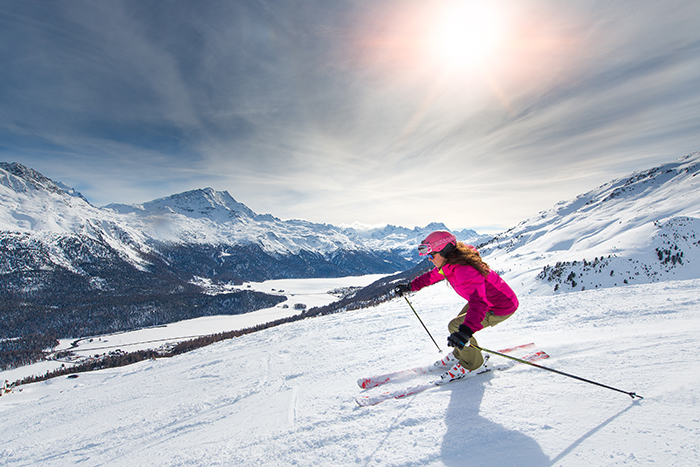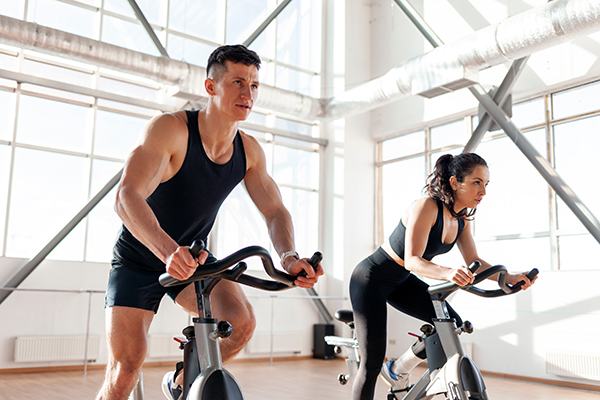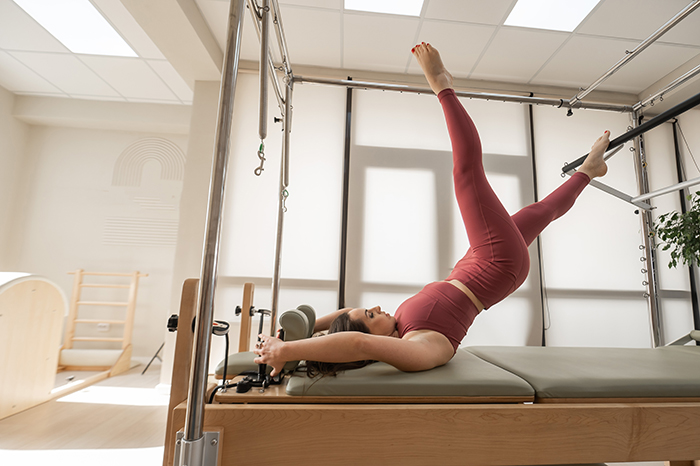By Amanda Lacey
Get in shape for SKI SEASON with exercises for going strong and staying injury-free

We see you. You’re already looking ahead to ski and snowboard season. Of course, getting in shape and preparing your body for hitting the slopes is important so you can make the most of your powder days and stay injury-free all season. These tips from local expert John Cole, certified strength and conditioning specialist with Fast Performance training facility in Denver, will ensure you’re ready in no time and keep you going strong.
GET STARTED
Strength training is essential, but the metabolic component is often overlooked and extremely important. Think cardiovascular, such as running, riding a bike, rowing, stair climbing, etc. Flexibility and mobility are equally important, too.


BOOST MUSCLE POWER
Focus on the lower backside muscle groups—your glutes and hamstrings specifically. “Glute strengthening cannot be overstated,” Cole says. Some go-tos include band work, single leg deadlift, decent squat mechanics while activating the glutes, and he says, “Don’t forget planks!” Front plank, side plank and plank pull-throughs—any variation that engages the glutes will benefit the body.
START SINGLE
Skiing is not a bilateral sport, meaning you’re not equally weighted on both feet simultaneously, so you shouldn’t train that way. “When you’re getting in shape for skiing, you have to think about single-leg exercises all the time. One-leg resistance training drills and one-leg balance drills, especially for intermediate to advanced skiers, are key,” Cole says.

BODYWEIGHT
Can’t quite make the time to hit the gym? No problem here because you don’t necessarily have to be in a gym to get in shape for skiing. Your body weight can provide quite a workout and can give you all the resistance you need in some cases. Simple things like single-leg squats, single-leg deadlifts, balance drills and planking will never fail.
KEEP FROM GETTING HURT
If you do have an injury, make sure to work with your doctor and physical therapist. Biking is excellent for rehabilitation as well as training for winter sports. The rotary motion strengthens soft tissues and creates greater mobility through the ankles, knees and hips.

STRETCH IT OUT
If you want to maintain good fitness throughout the ski season, getting in the gym
at least one to three days a week is advised—ride a stationary bike or do some type
of cardiovascular exercise such as stair climber or elliptical. And don’t neglect
your stretching and foam rolling. “Yoga is absolutely fantastic for pre-season and
in-season, I can’t recommend it enough,” Cole says. “Pilates is also something I
highly recommend.”
COOLDOWN AND RECOVER
After a day of being on the slopes, it’s vital to recover. Cole says the most important recovery activities include hydration, sleep, active isolated stretching, foam rolling and mobility work. “But sleep is the most important way to heal the body,” he says.
KEEP IT GOING
The cardiovascular component can’t be overlooked and needs to be maintained, which means participating in various sports and activities. Cole suggests different modalities such as mountain biking, stand-up paddleboarding, swimming and more. “Do something that enhances your experience through balance and some form of resistance,” he says. Biggest takeaway? Get out and be active all the time.

Fast Performance
4650 Leyden St., Unit F
Denver
303.437.1134
fastcolorado.com


